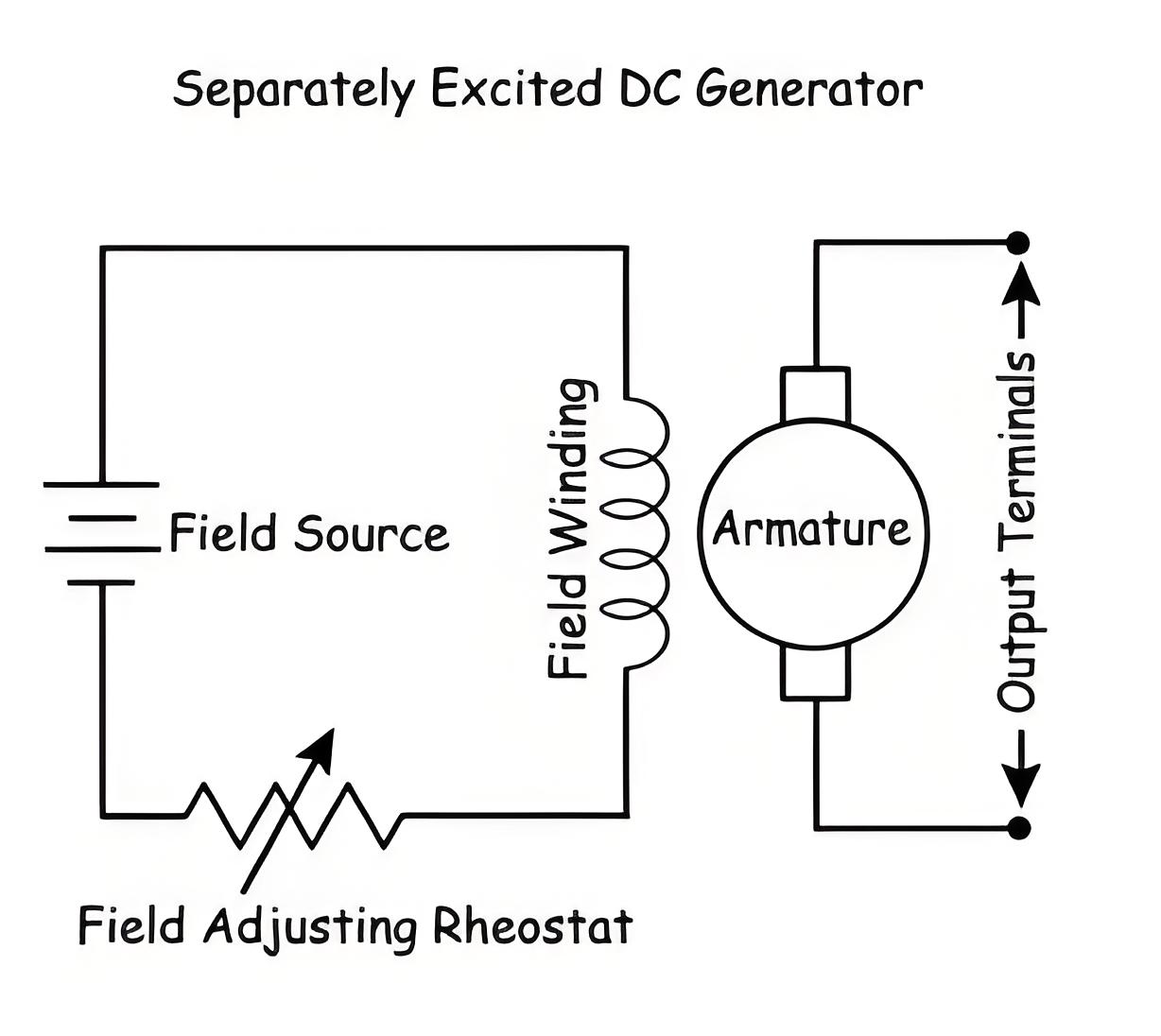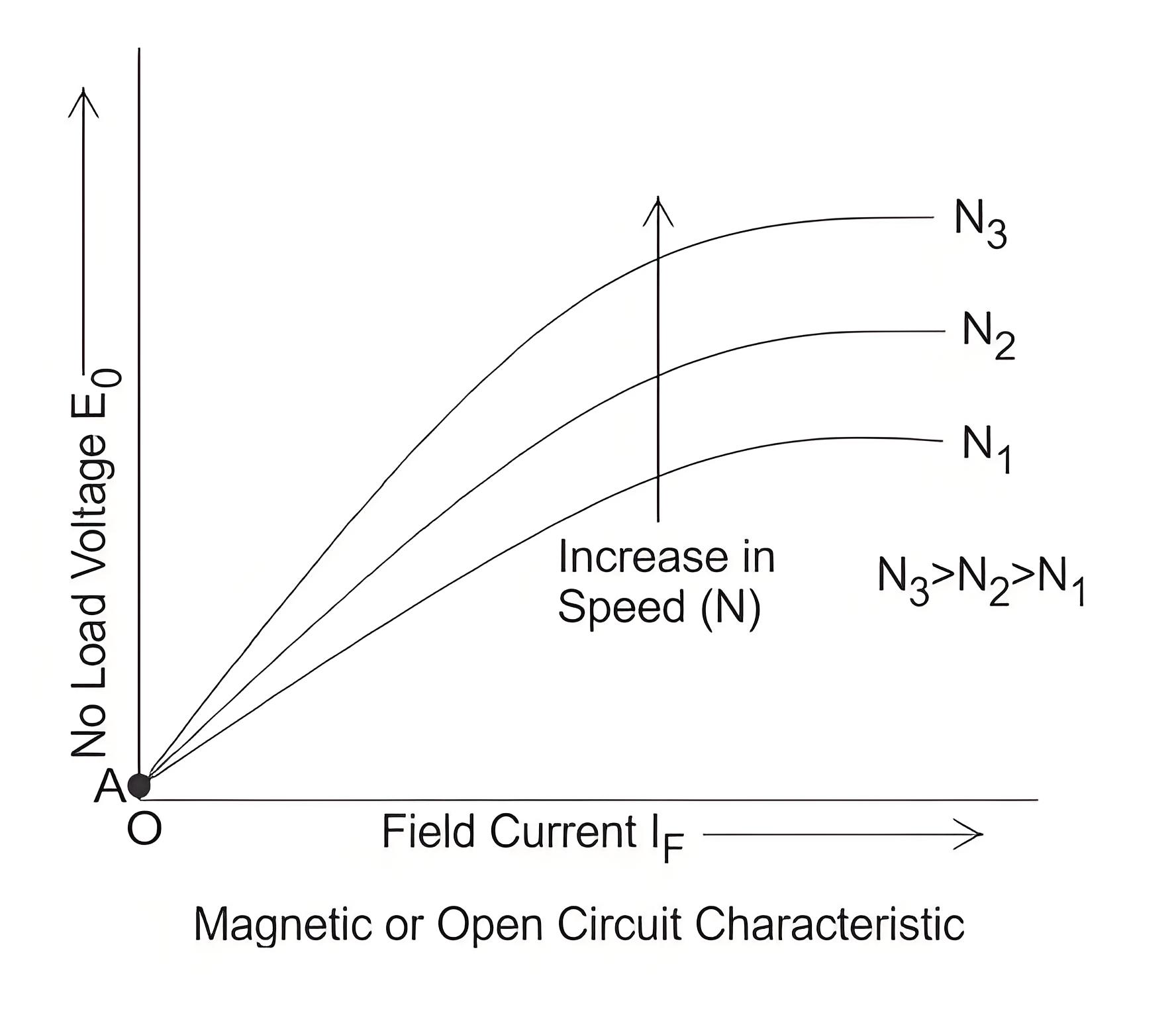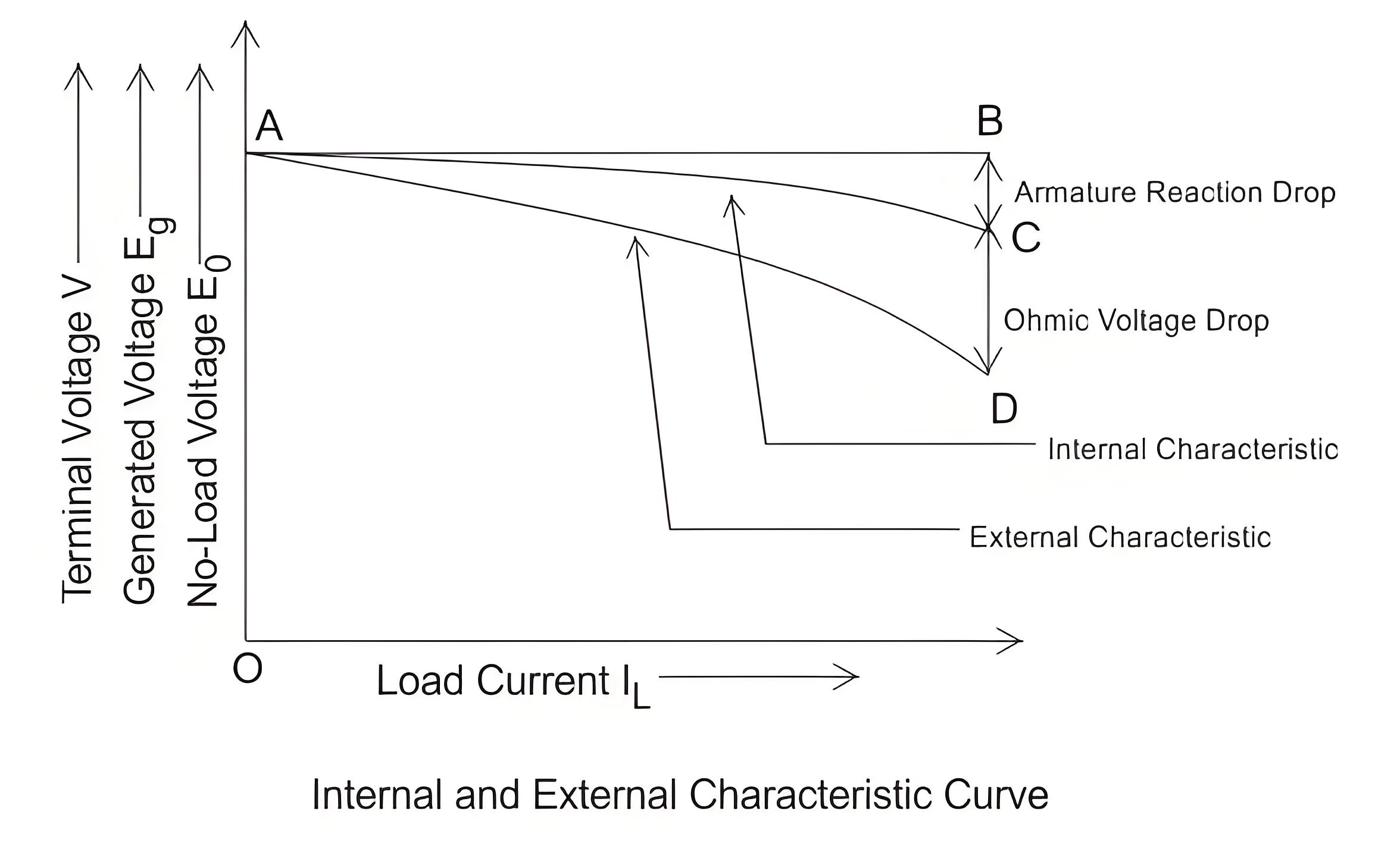Characteristic of Separately Excited DC Generator
Definition of Separately Excited DC Generator
A separately excited DC generator is defined as a DC generator where the field winding is powered by an external source.

Magnetic or Open Circuit Characteristic
The curve which gives the relation between field current (If) and the generated voltage (E0) in the armature on no load is called magnetic or open circuit characteristic of a DC generator. The plot of this curve is practically same for all types of generators, whether they are separately excited or self-excited. This curve is also known as no load saturation characteristic curve of DC generator.
The figure shows how the generated emf varies with field current at different fixed armature speeds without any load. Higher constant speeds result in a steeper curve. Even when the field current is zero, residual magnetism in the poles produces a small initial emf (OA).
Let us consider a separately excited DC generator giving its no load voltage E0 for a constant field current. If there is no armature reaction and armature voltage drop in the machine then the voltage will remain constant. Therefore, if we plot the rated voltage on the Y axis and load current on the X axis then the curve will be a straight line and parallel to X-axis as shown in figure below. Here, AB line indicating the no load voltage (E0).
When the generator is loaded then the voltage drops due to two main reasons-
Due to armature reaction,
Due to ohmic drop (IaRa).

Internal Characteristic Curve
The internal characteristic curve of a separately excited DC generator is created by subtracting the armature reaction drops from the no-load voltage. This curve shows the actual generated voltage (Eg), which slightly drops with load current. The AC line in the diagram represents this curve, also known as the total characteristic of a separately excited DC generator.
External Characteristic Curve
The internal characteristic curve of a separately excited DC generator is created by subtracting the armature reaction drops from the no-load voltage. This curve shows the actual generated voltage (Eg), which slightly drops with load current. The AC line in the diagram represents this curve, also known as the total characteristic of a separately excited DC generator.
The external characteristic of the separately excited DC generator is obtained by subtracting the drops due to ohmic loss (Ia Ra) in the armature from generated voltage (Eg).
Terminal voltage(V) = Eg – Ia Ra.
This curve gives the relation between the terminal voltage (V) and load current. The external characteristic curve lies below the internal characteristic curve. Here, AD line in the diagram below is indicating the change in terminal voltage(V) with increasing load current. It can be seen from figure that when load current increases then the terminal voltage decreases slightly. This decrease in terminal voltage can be maintained easily by increasing the field current and thus increasing the generated voltage. Therefore, we can get constant terminal voltage.

Advantages and Disadvantages
Separately excited DC generators provide stable operation and a wide voltage range but are costly due to the need for an external power source.
The Electricity Encyclopedia is dedicated to accelerating the dissemination and application of electricity knowledge and adding impetus to the development and innovation of the electricity industry.













